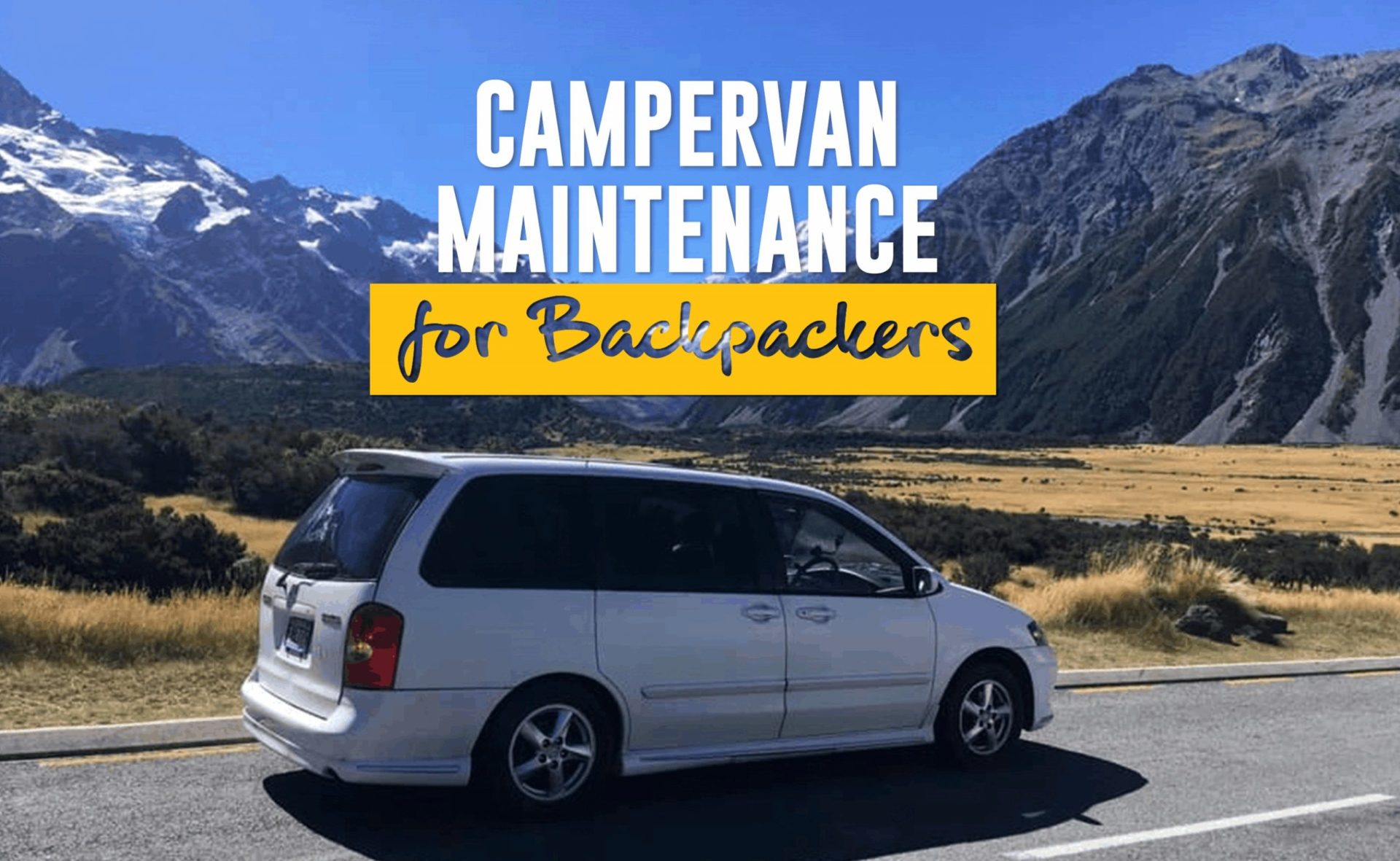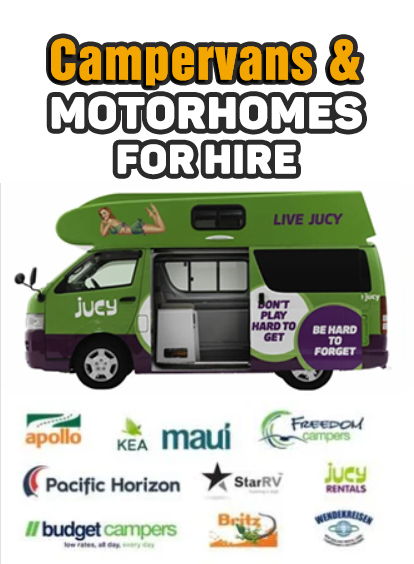✅ Last Update: May 19, 2025 @ 4:38 am
Owning a campervan brings you a whole new level of freedom and excitement in New Zealand, but there are a few maintenance basics that every campervan owner needs to know.
New Zealand’s road laws state that every vehicle needs to be registered with the NZTA, be fit for use, and be certified with a Warrant of Fitness – WOF.
🚐 The Basic Stuff to Put You on The Road
- WOF / Warrant of Fitness – A WOF is a warrant that proves that the vehicle is roadworthy and has been checked by a certified mechanic. It usually costs between NZD$50 and NZD$70, but would depend on all repairs before acquiring a WOF certificate.
- Registration – Vehicle registration or REGO is a tax paid to the NZTA and would depend on the vehicle’s age, make, mileage, and CC. REGO costs typically range from NZD$14 to NZD$25 per month. Diesel cars tend to cost around 35% to 50% more to register.
- Road User Charges – Road user charges are only applicable for diesel vehicles and amount to an average cost of NZD$89 per 1000 km travelled.
🔧 Let’s check out some campervan maintenance tips to maintain your campervan while you are in New Zealand
🥇 Campervan Maintenance (Best Tips)
1. Get the Vehicle Checked Properly
If you know a bit about cars, take your time to check it out yourself. But if you’re unsure, it’s always smart to book a proper inspection with a trusted mechanic.
When you’re doing a test drive or having the van looked at, listen for weird noises, check for warning lights, test the brakes, tyres, lights, and suspension. If something feels off, trust your gut.
⚠️ Avoid buying anything with electrical issues or warning lights on the dash—they can turn into expensive headaches fast.
Also, ask about the van’s service history. Has it had regular checkups? Has it been in a big crash before? That stuff matters more than you think.
And one more thing—ask when the cambelt or timing belt was last replaced. If it breaks, it can mess up the engine, and fixing that isn’t cheap.

2. Keep an Eye on Tyres and Fluids
It’s a good idea to learn how to check your van’s fluids and tyre pressure—it’s easier than it sounds, and super important on the road.
Make sure the engine oil, brake fluid, and coolant (water) are always at the right levels. Low fluids can lead to serious problems if ignored.
And don’t forget your tyres—keep them pumped to the right pressure. It helps with fuel economy, grip, and makes your drive way smoother.
A quick check every few days can save you heaps of trouble later. Think of it like brushing your teeth… but for your van.
3. Check the Cambelt (a.k.a Timing Belt)
If the van you’re buying has a cambelt (also called a timing belt), it’s super important to know when it was last changed.
These belts usually need replacing every 100,000 km or every 5 years—whichever comes first. Miss that, and you could be looking at some serious engine trouble.
A replacement can cost between $500–$1,000 NZD, so it’s better to make sure it’s already done or budget for it soon.
Not sure if it has one? Ask a trusted mechanic or the seller. And yep, cambelt = timing belt—same thing, different name.

4. Check the Tyres and Alignment
Tyres are a big deal when you’re road-tripping around New Zealand. The legal minimum tread is 1.5mm, but honestly, anything under 3mm isn’t ideal—especially with all the wet weather here.
Slippery roads + bald tyres = not a good time.
If you need new ones, don’t stress—second-hand tyres are easy to find and can save you up to $70 per tyre.
Also, check the alignment. If the car pulls left or right while driving, it might be out of line. A wheel alignment costs about $50 and takes around 30 minutes at most garages.
Bottom line: Good tyres = safe travels. Don’t skip this step.
📌 Find more about mechanicall stuff within our blog, we have a category for only mechanical related stuff: Mechanical Advice Hub
5. Make Sure You’ve Got a Spare Tyre and the Basics
Before you buy your camper or car, check for a spare tyre—and make sure there’s a tyre-changing kit (jack, wrench, etc.) onboard. You don’t want to be stuck in the middle of nowhere with a flat and no tools.
It’s also smart to have some emergency essentials in the back, especially if you’re road-tripping around New Zealand’s remote spots.
Here’s a handy starter list:
- Jumper cables (flat batteries happen!)
- 10–20L petrol can (just in case you’re far from the next servo)
- Flashlight
- Basic tool kit
- Fire extinguisher
- First aid kit
- High-vis jacket and a hazard triangle
“These small things can make a huge difference on the road. Better safe than stuck!”
6. Know Who to Call in an Emergency
Stuff happens on the road—even with the best prep. So it’s smart to know who to call if your campervan or car decides to act up.
If you’re buying from a car dealer, ask them who they recommend for mechanical help or roadside support.
If you’re going solo, stick to trusted names like:
- AA (Automobile Association)
- VTNZ (Vehicle Testing NZ)
- Or any MTA licensed mechanic (look for the blue MTA sign—those folks are legit)
🧑💻 FAQs About Campervan Maintenance in New Zealand
Yep! It’s a good idea to rotate your tyres every 10,000 km. It helps them wear evenly, gives you better control on the road, and saves cash in the long run.
By law, your tread has to be at least 1.5 mm, but anything under 3 mm isn’t great—especially with NZ’s wet roads. Good tyres = good grip = safer adventures.
Absolutely! If they’re in good shape, they’re a budget-friendly option. You can score a decent one for around $60–$70. Just make sure the tread and sidewalls are solid.
Use your vehicle regularly or drive at least once a week. If you’re parking long-term, consider disconnecting the battery or using a solar charger to keep it topped up.






